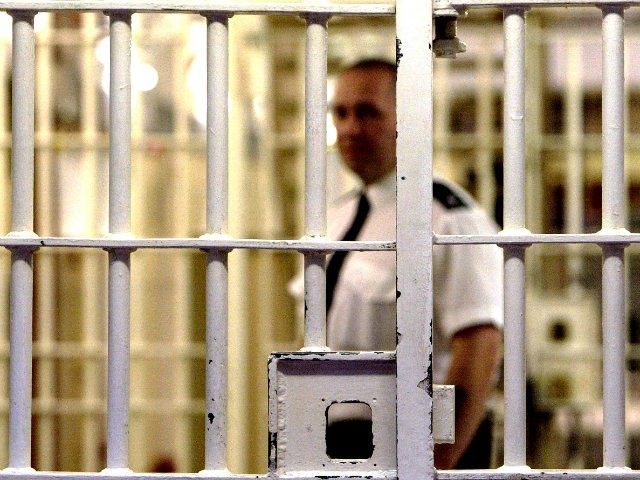House Speaker Paul Ryan’s first budget provides extra funding for President Barack Obama’s effort to release more convicts from federal prisons, despite warnings from police officials and the FBI chief.
The new funds raise spending on the prisoner-release program from $351 million in 2015, up to $426.8 million in 2016, while Obama’s appointees and allies press ahead their plans to release up to 46,000 prisoners with drug convictions into a lousy economy, where a surplus of foreign foreign-born workers have forced wages down since 2000.
Roughly 6,000 convicts have already been released, amid a nationwide spike in city murder rates. Murder rates in the nation’s biggest cities have climbed by 11 percent in 2015, according to the progressive Brennan Center for Justice. “This increase is not as startling as it may first seem,” said the new report, titled “Crime in 2015: A Preliminary Analysis,” which projects the 2015 murder toll in 25 cities at 3,668 dead.
The prisoner release program is coupled with increased efforts by the Justice Department to reduce penalties and imprisonment for drug-offenders. That rollback may also be increasing crime. In October, for example, a drug-offender who was not jailed for a drug offense subsequently killed a cop in a street gun-fight.
Police officials are signaling opposition to Obama’s policies, including more criticism of cops and more releases of prisoners. On Dec. 9, FBI Director James Comey warned against careless changes to sentencing and releases:
Our world, with respect to violent crime, is a world that was hard to imagine twenty-five years ago…I wouldn’t want to do anything without understanding the history that lets us slide back to that place. And I was saying that in the context of a worrisome spike in homicide in over 30 of the nation’s top 50 cities that’s occurred this year. That’s hard to explain, but it’s very worrisome. And I was simply sounding an alarm…and it drives us to be even more thoughtful on how we change our criminal justice system.
When asked by Sen. Jeff Sessions if more prison releases would spur crime, Comey responded “the logic of it would say yes, given the recidivism rate… the math would say, sure.”
https://www.youtube.com/watch?v=oGaXJPDjM9Q
But the rollback in criminal enforcement is backed by Speaker Paul Ryan. “We need to make redemption cool again in society,” Ryan told an audience at the North Carolina Business and Economic Development Summit, held in September 2015.
“‘We,’ meaning the political system overcompensated in the 90s, with our sentencing [policies],” Ryan said, according to a news article posted at his website. “I think the federal government can take the lead on having more discretion for judges on non-violent crimes [because] there are alternatives to incarceration that have proven to be more successful to getting people on the right path and into work,” he said.
Ryan’s 2016 omnibus adds $76 million to Omama’s prisoner clemency program.
In 2015, the appropriations bill said:
For expenses necessary for the administration of pardon and clemency petitions and immigration-related activities, $351,072,000, of which $4,000,000 shall be derived by transfer from the Executive Office for Immigration Review fees deposited in the ‘‘Immigration Examinations Fee’’ account.
For 2016, the new budget plans says on page 134:
For expenses necessary for the administration of pardon and clemency petitions and immigration-related activities, $426,791,000, of which $4,000,000 shall be derived by transfer from the Executive Office for Immigration Review fees deposited in the ‘‘Immigration Examinations Fee’’ account: Provided, That of the amount available for the Executive Office for Immigration Review, not to exceed $15,000,000 shall remain available until expended.
Between 1960 and 1980, crime spiked fourfold in the United States, while judges and cops backed off from enforcement under heavy pressure from ’60s-era optimism, demonstrations and the complete failure of older Americans leaders to defend the nation’s generous and very successful culture. The nation’s murder rate roughly doubled from 1964 to 1973.
Amid the rising crime, civic culture shifted — people socialized less and watched more movies about violent crime. Mainstream movies applauded tough cops and vigilantes — “Dirty Harry,” in 1971, “Death Wish” in 1974, and “Taxi Driver” in 1976. Cult-movies and science-fiction movies were also built around city-wrecking levels of crime, such as “The Warriors” in 1979 and “Escape From New York” in 1981.
President Ronald Reagan was elected in 1980, partly because of his promise to help stop crime. Once Congress acted to revive tough policing and sentencing, criminals were removed from society and placed in jails. Then the crime-spike gradually dropped in the 1990s, and has continued dropping until the sixth year of Obama’s presidency.
Donald Trump, who saw the worst of the 1970s crime spike in New York, is signaling his support for police groups. “One of the first things I’d do in terms of executive order, if I win, will be to sign a strong, strong statement that would go out to the country, out to the world, anybody killing a police man, a police woman, a police officer, anybody killing a police officer, the death penalty is going to happen,” he told a police group at a Dec. 10 speech in New Hampshire.

COMMENTS
Please let us know if you're having issues with commenting.